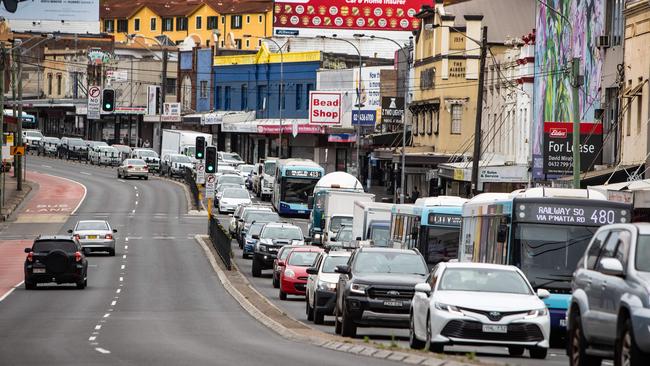Australia’s longstanding population movement trend has been reversed | David Penberthy
Once upon a time, people from Sydney or Melbourne turned their noses up at the idea of living in a smaller capital, writes David Penberthy. Not any more.

Opinion
Don't miss out on the headlines from Opinion. Followed categories will be added to My News.
Returning to Sydney for a holiday last year was a reminder of two things. That Sydney, my home of almost 12 years, is one of the most beautiful cities on earth.
And that wild horses wouldn’t drag me back to live there.
As an Adelaide person living in Sydney, people regard you with a patronising brand of sympathy.
Aside from enduring tired gags about serial killers, you also face casual pity from people who regard you as lucky to have escaped such a backward and dull town.
They express this opinion with no sense of arrogance or aloofness.
They simply assume that anyone who has moved from Adelaide to Sydney must be a cultural and occupational refugee, relieved to have fled a place marked by a complete lack of excitement and opportunity.
The truth was that I had only intended to stay in Sydney for a couple of years but ended up staying for longer on account of my job.
I’d always intended to come home, years sooner than I did, because I have always regarded Adelaide as a vastly more satisfying and balanced place to live.
Sentiments such as these are shared by a growing number of people if the latest data about regional growth versus big city living is any indicator.

What started as a Covid-related trend is now becoming an entrenched pattern. The data tells a story that is both happy and sad. Happy, in that people are finding the joys of living smaller.
Sad, in that it shows that Melbourne and Sydney are now so crushingly unaffordable that any young couple who hasn’t inherited real estate from parents or grandparents has zero chance of entering the property market.
Add to that the extra costs of transport and tolls, higher state taxation through things like car rego and annual inspections, and the costs of living in the big east coast cities is more than double the price of an existence in Adelaide.
Data released this week by the Regional Australia Institute showed that the longstanding shift of younger people from the regions to state capitals has now reversed.
The Australian reported this week that from 2011-16 there was a net loss of 37,000 Millennials (people aged 25 to 39) from the regions to the capitals, but from 2016-21 it flipped to a 54,000 net gain to the regions.
Overall, regional Australia reported a net gain of 166,073 from capital cities between 2016 and 2021, almost triple the number from 2011-16. The biggest loser of people was Sydney, with a net loss of 110,000 people, just behind what is now Australia’s biggest city in Melbourne which lost 81,000 people.
RAI CEO Liz Ritchie said the reversal was without precedent and likely to continue.
“Our research from pre-Covid revealed that one in five city dwellers say they want to leave the big cities, and Covid has supercharged that desire to move,” Ms Ritchie said.
“It’s given them permission to realise their dream to live and work where they love, to spend more time with their families and less time commuting.”
“We think this won’t be a Covid blip but an ongoing trend. People want more time, more space, more connection to other people and to live where it’s more affordable.
They want to leave behind congestion, debt and the stress that comes with that.”
What does this mean for us here in SA?
Some would say we have already reached a kind of Goldilocks scenario where our population is perfect and that we should declare ourselves full and take no more.
Some even argue we are already too congested, as evidenced by the citywide hue and cry about urban backfill housing, the fact that streets like my old one in Mitchell Park once had about 30 houses on 800 sqm blocks and now has about 50 houses, many of them on 300 sqm blocks.
In my view the assertion that Adelaide is at breaking point is absurd.
It is the kind of claim you would only make if you had never lived anywhere else, and had never experienced a one-hour, 6km work commute along Parramatta Rd.
We are not even close to being as busy as Sydney and Melbourne were at the end of last century.
That’s not to say we shouldn’t be vigilant about protecting our lifestyle. But we should be mature enough to accept that we can take more people than we currently have, as this newspaper has been advocating for some years now under its Bigger, Better South Australia campaign.
The other set of data that demonstrates the need to grow is the Intergenerational Report which shows that by 2060 Australians will be living well into their late 80s.
This report is a wake-up call for a state like ours which already has a higher proportion of older residents and which in 30 years time risks looking like Victor Harbour on steroids unless we drive up our population.
We will end up with a vast swathe of older residents, most of them incapable of full-time work, and not enough people to care for them.
Where all these new people live is another matter entirely.
If people are opposed to infill housing in existing suburbs – and they seem to be given the number of resident action groups which spring up across town, sometimes over the most modest developments – the only alternative is to develop more tracts of land further out and create new suburbs.
This will of course lead to other pressures, complaints against urban growth encroaching onto green land, or complaints about traffic management as we are seeing in Hahndorf right now. We need to have a sensible and mature conversation about it though, because the latest regional data shows that the secret is out, the rest of the country is officially onto us, and they’re also on their way.





